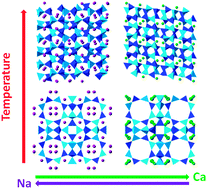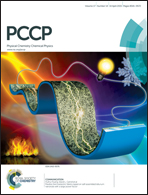Energetics and structural evolution of Na–Ca exchanged zeolite A during heating
Abstract
The properties of zeolite A change significantly upon sodium–calcium exchange. The impact of cation composition on the temperature-induced phase transformations and energetics of Na–Ca exchanged zeolite A was studied systematically using powder X-ray diffraction (XRD), thermogravimetric analysis (TGA), differential scanning calorimetry (DSC) and high-temperature oxide melt solution calorimetry. As the temperature increases, the structural evolution of each Na–Ca exchanged zeolite A sample undergoes three distinct stages – dehydration, amorphization, and densification/recrystallization. Initially complete dehydration does not result in framework degradation, but further heating leads to zeolite phase degradation into other aluminosilicate phases. Both amorphization and recrystallization shift to higher temperatures as the calcium content increases. On the other hand, the enthalpies of formation for the high temperature aluminosilicate phases, the amorphous phase (AP) and the dense phase (DP), appear to be a linear function of calcium content (average ionic potential) with diminishing of energetic stability upon increasing the Ca content. 100% Na-A heated at 1200 °C has the most exothermic enthalpy of formation from oxides (−65.87 ± 0.87 kJ mol−1 – TO2), while 97.9% CaNa-A heated at 945 °C has the least exothermic value (−5.26 ± 0.62 kJ mol−1 – TO2). For different aluminosilicates with the same chemical composition, the dense phase (DP) assemblage is more stable than the amorphous phase (AP).


 Please wait while we load your content...
Please wait while we load your content...